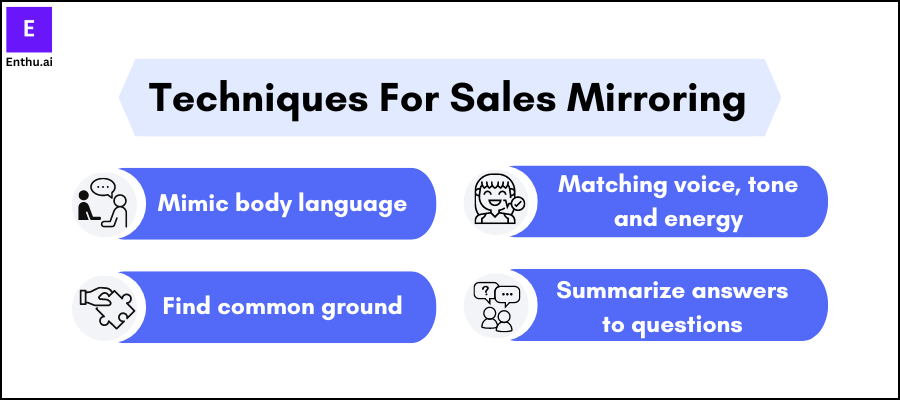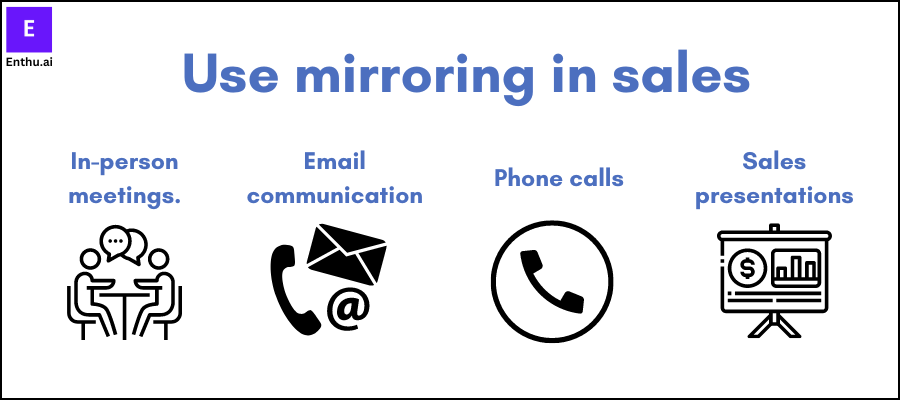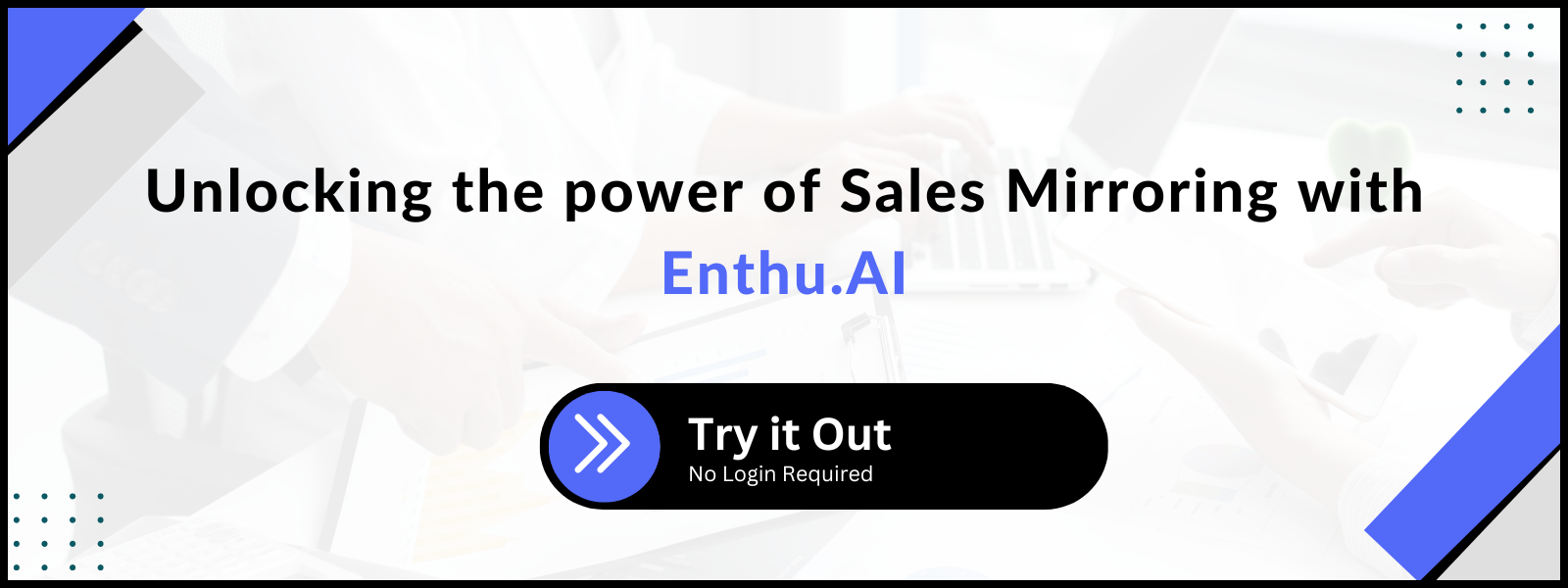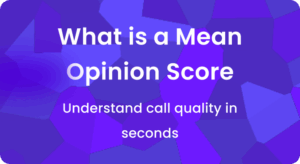There is a famous phrase, “people buy people”.
It simply means people are more likely to buy from people they know, like, and trust.
Even today, 71% of customers are more likely to purchase from a brand they trust.
So, if you’re a business owner who wants to boost your brand’s sales and profit, you also need to generate a sense of trust and confidence among your customers.
But building rapport and cultivating a friendly relationship with potential customers is more challenging than it seems.
Ineffective communications and a lack of clear information about your prospects’ tastes, preferences, and buying behaviors are some barriers to building trust with them.
Is there any solution to this? Yes. It’s called sales mirroring.
Sales mirroring is a powerful psychological tactic that your sales representatives or customer service agents can use to create a strong bond and close more deals with potential customers.
Keep reading to learn everything about sales mirroring—what it is, why it matters, and the most effective techniques for boosting your sales.
A. What is sales mirroring?
Sales mirroring is a technique used by successful salespeople and call center agents. It helps them build a strong connection with potential customers.
It’s a strategy to build rapport. A salesperson subtly matches the way potential customers talk and act in a conversation.
The goal is to build trust with potential customers. This will make them feel more comfortable, even if your salespeople have never met them.
If customers see your salesperson as similar to them, the conversation may flow. It may be easier to build rapport.
You can mimic specific behaviors of your customers with a few simple techniques. It involves:
- Body language
- Tone of voice
- Speech patterns
- Communication style
- Share experiences
- Matching their energy
When you adjust your talking style to match theirs, it shows that you’re both thinking alike.
This can make talking easier and friendlier. And when conversations flow better, they’re more likely to end with a successful sale.
B. Importance of sales mirroring
Sales mirroring offers numerous benefits to salespeople.
Converting your prospects into customers is not a sprint but a marathon.
Building a lasting relationship demands a lot of time and effort. By mimicking your customers’ verbal and nonverbal cues, salespeople can quickly create a sense of familiarity.
Sales mirroring is important because it helps you:
1. Establish trust and rapport

Only a paltry 3% of customers consider salespeople to be trustworthy.
That’s why most salespeople fail to attract customers and generate leads.
By matching their body language, style, and words, you can help potential customers feel more understood.
They start trusting you and believing you’re trying to help them.
Eventually, they become more comfortable. They will discuss their needs with you.
2. Build relationships

When salespeople copy how their customers talk, it helps them connect faster.
This makes customers feel comfortable right away.
Mirroring builds a friendly bond that lasts throughout the buying process.
It’s like speaking the same language, which makes it easier to understand each other.
This way, customers are more likely to listen to the salesperson and consider their ideas.
3. Improve communication

Sales mirroring helps salespeople listen better and have real conversations with prospects.
This makes communication clearer and smoother.
When sellers understand their customers and match their style, it’s easier to connect.
As a result, more deals get closed, and customers feel like they’re working with someone who gets them.
C. Effective techniques for sales mirroring
It’s important to be subtle and natural when using the mirror technique.
Be yourself, but keep these tips in mind to get a good response from others.

1. Mimic body language
To build trust and rapport, watch your customer’s body language. Then, consciously mimic their posture and behaviors.
For example, if they lean back or forward or sit with legs crossed, you should do the same.
Notice their posture and gestures while communicating and try to mirror those movements.
Using similar body language creates a positive commonality between you and your prospects.
It shows that both are thinking alike, no matter your mood.
2. Matching voice, tone and energy
To build trust in sales, you must match your customers’ energy, tone, and voice.
If they’re serious, it’s key to show you understand. You should adopt a serious tone too.
If they’re upbeat, a similar tone can keep the chat flowing.
Adjusting your tone and pace to match theirs creates a sense of harmony and understanding.
This subtle mirroring of their vocal cues builds rapport. It shows you’re in tune with their mood and preferences.
Contrasting energy can cause tension. So, stay confident and aware of their feelings during the chat.
Match their tone and pace, whether you dive into business or chat first. This approach helps build a comfortable and trusting atmosphere. In turn, it can lead to more successful sales interactions.
3. Using similar words, phrases, and communication style
Using similar words and styles builds trust. It shows you understand your customers.
If you use too much-complicated jargon, it can confuse and overwhelm them. Instead, ease into it and use industry knowledge in a way that’s easy to understand.
Keep your language casual like theirs, and echo some of their phrases back to them.
This lets them know you’re listening and that you get where they’re coming from.
Matching their style helps them feel heard, whether they want details or just the big picture.
By using their language, you avoid sounding insincere. It shows you’re connecting with them.
So, before you meet with a customer, take note of their preferred terms and use them in your conversation.
It’s all about speaking their language to build trust and rapport.
4. Find common ground
Finding common ground is key to building rapport with potential customers.
Some are all about business, while others like a personal touch.
If a prospect shares personal details, reciprocate by sharing some of your own.
But if they’re strictly business-focused, keep the conversation serious and to the point.
You can connect over common experiences such as favorite movies or hobbies.
Take a moment to see if you share any interests outside of work.
This builds a relationship beyond the transaction. It makes the chat more enjoyable and builds mutual trust.
5. Summarize answers to questions
When a potential customer shares something, it’s vital to show you’re listening. Summarizing what they’ve said in your response is a way of doing that.
Instead of just repeating what they said, you rephrase it. This shows you’ve understood.
If they say they’re worried about deadlines, you could respond, “It seems meeting deadlines really worries you.”
This shows that you’ve not only heard them but also understood their point.
Active listening builds trust and rapport. It shows you care about their views and take their concerns seriously.
It makes them feel valued and understood, which can go a long way in building a positive relationship.
D. When and where to use mirroring in sales?

Mirroring in sales is a versatile tool. You can use it at various stages of the sales process and in different communication channels.
1. In-person meetings.
In face-to-face meetings, your salespeople can see your prospect’s body language, tone, and style.
They can match their posture, gestures, and facial expressions to create a sense of rapport.
2. Phone calls
Your agents can’t see your prospect’s body language on calls. But, you can still mirror their tone of voice and language patterns.
Pay attention to their speaking speed, volume, and tone, and try to match these as closely as possible.
3. Email communication
Your salespersons or call center agents can pay attention to the tone and style of your prospect’s emails and mirror these in your responses.
Mirroring their email style makes communication smoother. It shows you share the same vibe.
4. Sales presentations
During sales presentations, tailor your approach to match the preferences of your audience.
By mirroring their preferred style, you can better engage them. It will address their needs and preferences.
E. How Enthu.AI measures sales mirroring?
Enthu.AI is an advanced conversation intelligence software that measures sales mirroring by closely monitoring customer conversations and pinpointing key opportunities that help strengthen relationships with customers.
It analyzes interactions across various channels like phone calls, chats, tickets, and more.
By identifying specific moments such as competitor comparisons, sales objections, or legal and compliance issues, Enthu.AI highlights areas where agents can improve their mirroring of customer needs and preferences.
Call monitoring and speech analysis helps you get actionable insights derived from these conversations, enabling effective agent sales training and coaching.
Through real-time feedback and targeted sales coaching interventions, your agents can learn to mirror the tone, language, and approach that resonate best with customers.
This personalized approach not only enhances the customer experience but also drives better sales outcomes by aligning with customer expectations.
Enthu.AI’s comprehensive analysis of customer interactions enables organizations to measure sales mirroring by evaluating how effectively agents reflect and respond to customer needs, leading to stronger customer relationships and improved sales performance.
Conclusion
Integrating sales mirroring into your strategy can have significant benefits, including increasing likeability, improving rapport, and ultimately boosting sales.
Enthu.AI offers valuable insights into customer tone, language, behavior, and sentiment, which can be used to train agents to effectively mirror customers.
By leveraging these insights and incorporating mirroring techniques into sales meetings and interactions, you can build stronger relationships with your prospects, leading to enhanced customer satisfaction and improved NPS.
FAQs
1. How to use mirroring in sales?
Use mirroring in sales by subtly reflecting the tone, body language, and language of your customers. This builds rapport and makes them feel understood, leading to better connections and increased trust.
2. Is mirroring good for sales?
Yes, mirroring is excellent for sales as it helps establish rapport, improves communication, and enhances the overall customer experience. By mirroring your customers, you can create a sense of connection that can lead to increased sales opportunities.
3. Examples of mirroring in sales?
Mirroring in sales can involve matching the pace of speech, adopting similar body language, or using similar vocabulary as the customer. For instance, if a customer speaks slowly and calmly, you can mirror their pace to create harmony and build rapport.




 On this page
On this page












